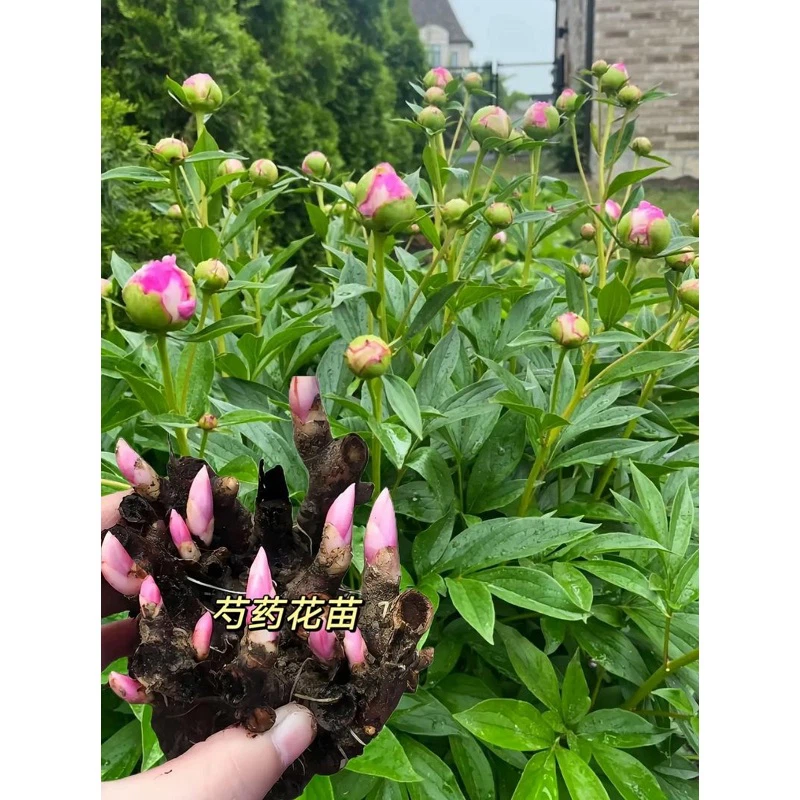What is the Cold Hardiness Zone for Island Peony?
As a dedicated supplier of Island Peony, I've had the privilege of delving deep into the world of these magnificent flowers. One of the most frequently asked questions I encounter is about the cold hardiness zone for Island Peony. In this blog, I'll share my knowledge and experiences to help you understand this crucial aspect of growing Island Peony successfully.
Understanding Cold Hardiness Zones
Cold hardiness zones are a system developed by the United States Department of Agriculture (USDA) to classify regions based on their average annual minimum winter temperatures. These zones range from 1 (the coldest) to 13 (the warmest), and they provide valuable information for gardeners and plant enthusiasts. By knowing the cold hardiness zone of a particular area, you can determine which plants are likely to thrive in that climate.
The Cold Hardiness Zone for Island Peony
Island Peony, scientifically known as Paeonia suffruticosa var. spontanea, is a beautiful and resilient plant. Generally, Island Peony is hardy in USDA zones 4 - 8. This means that it can tolerate winter temperatures as low as -30°F (-34°C) in zone 4 and as high as 20°F (-6°C) in zone 8.
In zone 4, where winters are extremely cold, Island Peony may require some extra protection. A thick layer of mulch around the base of the plant can help insulate the roots and prevent them from freezing. You can use materials like straw, shredded leaves, or pine needles for mulching. Additionally, covering the plant with a burlap sack or a frost blanket during severe cold snaps can provide further protection.
In zone 8, the milder winters are generally well-suited for Island Peony. However, it's important to note that even in warmer zones, sudden drops in temperature can still pose a threat. Monitoring the weather forecast and taking appropriate precautions, such as covering the plant if a cold front is expected, is advisable.
Factors Affecting Cold Hardiness
While the USDA cold hardiness zones provide a general guideline, several other factors can influence the ability of Island Peony to withstand cold temperatures.
Soil Conditions: Well - drained soil is essential for Island Peony, especially in cold climates. Poorly drained soil can lead to waterlogging, which can cause the roots to rot during freezing temperatures. Adding organic matter, such as compost or aged manure, to the soil can improve its drainage and fertility.
Plant Age and Health: Young and newly planted Island Peony may be more vulnerable to cold stress than established plants. It's important to give new plants time to develop a strong root system before the onset of winter. Regular fertilization, proper watering, and pest control can help keep the plants healthy and more resilient to cold.
Microclimates: Microclimates within a garden can also have a significant impact on cold hardiness. For example, a south - facing slope or an area near a building can be warmer than the surrounding area, providing a more favorable environment for Island Peony. Taking advantage of these microclimates can help extend the range of cold hardiness for the plant.
Comparing Island Peony with Other Peony Varieties
When it comes to cold hardiness, different peony varieties have different requirements. For instance, the Sun and Moon Peony is also a popular choice among gardeners. It generally has a similar cold hardiness range as Island Peony, being suitable for USDA zones 4 - 8. However, the specific characteristics of each variety may cause slight variations in their ability to withstand cold.
The Flower Oil Peony is another variety worth mentioning. It may have a slightly different cold hardiness profile, with some cultivars being more cold - tolerant and others being better suited for warmer zones. Understanding the unique needs of each variety is crucial for successful cultivation.
Growing Island Peony in Different Zones
Zone 4 - 5: In these colder zones, it's best to plant Island Peony in a location that receives full sun in the spring and early summer, but some afternoon shade in the hot summer months. This helps protect the plant from excessive heat stress. As mentioned earlier, proper mulching and winter protection are essential. Pruning should be done in the late winter or early spring to remove any dead or damaged branches.
Zone 6 - 7: These zones offer a more moderate climate for Island Peony. The plants can be planted in a location with full sun, although they can also tolerate some light shade. Regular watering during dry periods and occasional fertilization can help keep the plants healthy.


Zone 8: In this warmer zone, Island Peony may benefit from some protection from the intense afternoon sun. Planting them in a location with dappled shade or morning sun and afternoon shade can prevent the flowers from fading too quickly. Adequate watering is also crucial, especially during the hot summer months.
Why Choose Island Peony?
Island Peony is not only known for its cold hardiness but also for its stunning beauty. The large, showy flowers come in a variety of colors, including pink, white, and purple. They add a touch of elegance and charm to any garden. Moreover, Island Peony is relatively low - maintenance compared to some other ornamental plants. Once established, it can thrive for many years with minimal care.
Contact for Procurement
If you're interested in adding Island Peony to your garden or nursery, I'd be more than happy to assist you. Whether you're a professional landscaper, a home gardener, or a wholesaler, I can provide you with high - quality Island Peony plants. Please feel free to reach out to discuss your procurement needs. We can work together to ensure that you get the best plants for your specific requirements.
References
- United States Department of Agriculture (USDA). USDA Plant Hardiness Zone Map.
- Various horticultural research papers on peony cultivation and cold hardiness.






